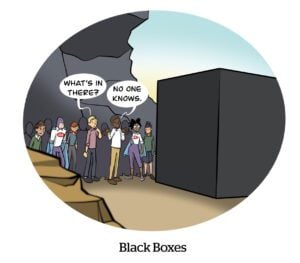So Much To Disch
Jerry Dischler, a 20-year Google vet who led the advertising business from 2005 to 2024, announced that he’s leaving the company as of this week.
He departed as ads leader a year ago, stepping over to a role as president of Cloud Applications.
Despite having overseen likely the largest ad growth a company has had in, well, ever, Dischler may be best remembered for his uncomfortable spotlight during the 2023 Google Search antitrust trial.
He testified that Google routinely raised prices by as much as 10% on valuable search terms when Google needed to meet its own revenue benchmarks. Advertisers were not alerted to this auction dynamic, of Google treating aggregate search demand as a sort of ATM that might be debited when the company needed to pad its numbers.
The DOJ secured an internal message sent by Dischler in which he had offhandedly referred to the practice as “shaking the cushions.” So he was in a bad spot.
Apparently, he learned the lesson, but too much so. Because Dischler was specifically cited by Judge Leonie Brinkema during the ad tech antitrust trial last year for using auto-delete messages that didn’t retain information relevant to the case.
Generating Revenue
Generative AI LLMs are beefing up their executive ranks with a new kind of expertise.
Not mathematics. No, not engineering. Not hardware engineers either – good guess, though.
This time it’s ad tech and marketing.
Microsoft just hired Mark D’Arcy, a longtime Meta marketer who was also at Time Warner, as creative director of its Copilot business, The Information reports.
In December, Perplexity hired Taz Patel, co-founder and the influencer marketing company Captiv8 and the one-time VP of business development at Sizmek. He leads its shopping and advertising business.
And just last week, OpenAI named Fidji Simo as CEO of its Applications business. Simo is CEO of Instacart, where she was an advocate of launching its ad tech and data business. She was a longtime Facebook exec whose first role was as the product marketer responsible for the launch of ads in the News Feed. She was part of the launch of eBay’s ad business before that.
Perhaps you spot a trend.
Outputs Are In
Agency holding companies went through a long winter of critical pessimism.
Ad tech companies were going straight to brands, which were in-housing their agencies. Agencies downsized and lost their media kickbacks.
Holdcos bounced back, but now face a more serious threat in the form of generative AI solutions.
Software businesses are better situated to charge based on data or usage, akin to cloud infrastructure or enterprise generative AI tech companies.
Agencies generally get paid based on the number of individuals working on an account. Like, actual humans.
What happens when marketers question every strategy brief or creative item: “Wasn’t this just a prompt?” Perhaps that’s why holdcos all give their generative AI chatbots normal human names.
But a real solution is for agencies to change their business model, from focusing on time spent by a number of people on an account to something more like total output.
“We’re now working, obviously, on retainers and on compensation for FTEs employed,” said Martin Sorrell, CEO of the holdco S4Capital, told investors last week during an earnings report. “But in addition, we’re working on the basis of assets or outputs delivered.”
But Wait! There’s More
PubMatic reports a 4% YOY drop in Q1 revenue to $67.1 million, citing lingering effects from Google DV360 switching to first-price auctions last year. However, its stock price jumped 10% as it reported its 36th consecutive profitable quarter. [Investing.com]
Apple filed an emergency motion to reverse a court injunction forcing it to offer alternative payment methods for apps in its App Store. [Ars Technica]
Employees who use AI tools at work face negative judgment from their colleagues, says a prominent multidisciplinary research journal. [Ars Technica]
Google is partnering with a nuclear site developer to generate power for its AI data centers. [TechCrunch]
A new study by the UK’s Advertising Association found that only 40% of members think the industry is trustworthy. [ExchangeWire]
How did publishers like BuzzFeed, NYT and News Corp fare this past quarter? [Digiday]
You’re Hired!
















